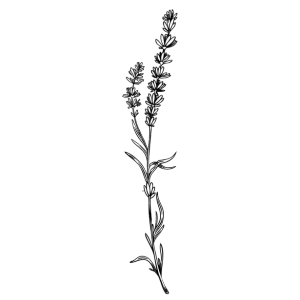Lavender, a fragrant and captivating plant, has long held a special place in the hearts and histories of people around the world. From its ancient origins to its modern-day applications, this remarkable herb has woven itself into the fabric of human culture, offering a wealth of medicinal, therapeutic, and culinary benefits. In this blog post, we'll delve into the fascinating history and diverse properties of this beloved plant.
The Origins of Lavender
Lavender's origins can be traced back to the Mediterranean region, where it has been cultivated for thousands of years. The name "lavender" is derived from the Latin word "lavare," meaning "to wash," a nod to the plant's historical use in bathing and cleansing rituals. The earliest recorded use of lavender dates back to ancient Egypt, where it was used in mummification processes and as a perfume.
As the centuries passed, lavender's popularity spread throughout the ancient world, with the Greeks and Romans incorporating it into their daily lives. The Greeks used lavender to scent their baths and perfume their clothes, while the Romans valued it for its medicinal properties, using it to treat a variety of ailments.
In many cultures, lavender has also been incorporated into religious and spiritual practices. In ancient Greece, the plant was associated with the goddess Aphrodite, and it was often used in rituals and ceremonies. Similarly, in the Middle East, lavender has been used in incense and as a symbol of purity and cleansing.
Lavender Essential Oil Natural Properties
Besides its wonderful fragrance, centuries of documented experience along with modern science have established Lavender Essential Oil's many naturally-occurring properties — antiseptic, topical anesthetic, sedative, insect repellant and natural solvent. These natural properties are the foundation for all the luxurious and practical products we make at True Lavender Collective.
Historically, lavender has been revered for its antiseptic qualities, making it a valuable tool in wound care and infection prevention. The plant's essential oils contain compounds that possess natural antimicrobial and anti-inflammatory properties, making it an effective topical treatment for a variety of skin conditions.
In addition to its antiseptic benefits, lavender has also been recognized for its topical anesthetic effects. The plant's compounds can help to numb and soothe pain, making it a valuable natural remedy for conditions such as headaches, muscle aches, and joint pain.
Perhaps one of the most well-known therapeutic properties of lavender is its sedative effect. The plant's essential oils have been shown to have a calming influence on the nervous system, promoting relaxation and aiding in the treatment of insomnia and anxiety. This has led to the widespread use of lavender in aromatherapy and other holistic wellness practices.
Lavender’s place in the home also has a centuries-old tradition, not just for its refreshing fragrance, but also for its usefulness in a variety of common household applications that utilize its key oil solvent, disinfectant, and insect repelling properties. The often forgotten use for lavender is as an organic disinfectant and solvent and its ability to cut through other oils. It will rapidly help remove grease, paint and glues from various surfaces and all the while with a much more pleasant and safer odor than other chemical solvents.
In the kitchen, lavender has been used to add a delicate floral flavor to a variety of dishes, from baked goods and sauces to teas and cocktails. Once one of its most widespread uses, lavender as a culinary herb is enjoying a dramatic revival in recipes that display its remarkable versatility on both the sweet and savory sides of the palette.
Lavender in the Modern World
Today, lavender continues to hold a prominent place in the modern world, with its essential oil and hydrosol being widely used in a variety of commercial and agricultural applications. The global essential oil market, which includes lavender, is expected to grow significantly in the coming years, driven by the increasing demand for natural and sustainable products.
In the wellness industry, lavender has become a staple ingredient in a wide range of products, from skincare and haircare to home fragrances and aromatherapy. Its calming and soothing properties have made it a popular choice for those seeking natural solutions to stress, anxiety, and sleep-related issues.
Conclusion
The captivating history and versatile properties of lavender have made it a beloved and enduring plant in the hearts and minds of people around the world. From its ancient origins to its modern-day applications, this remarkable herb continues to offer a wealth of benefits, from its medicinal and therapeutic qualities to its culinary and cultural significance. As we move forward, it is clear that lavender will continue to play a vital role in our lives, providing us with a fragrant and calming connection to the natural world.

